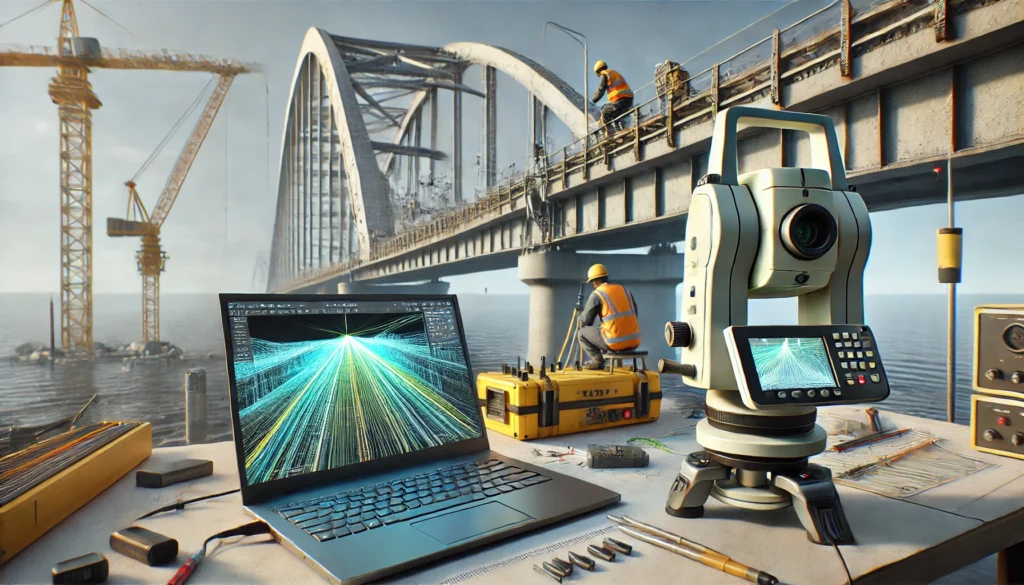Structural deformation monitoring is a crucial process in the construction and maintenance of buildings, bridges, dams, and other infrastructure. By tracking the movement and deformation of structures over time, engineers and inspectors can ensure their safety, stability, and longevity. This comprehensive guide delves into the importance of structural deformation monitoring, the techniques used, and best practices for maintaining the integrity of structures.
1. Understanding Structural Deformation
Structural deformation refers to changes in the shape, position, or size of a structure under various forces such as loads, environmental factors, and material degradation. While some deformation is normal and expected in structures, excessive or unanticipated deformation can indicate potential structural failures or weaknesses.
2. Importance of Structural Deformation Monitoring
Monitoring structural deformation is vital for several reasons:
- Safety: Continuous monitoring helps detect early signs of structural distress, preventing accidents or collapses.
- Maintenance: Identifying areas of deformation allows for timely repairs and maintenance, prolonging the structure’s life.
- Regulatory Compliance: Adhering to safety and structural integrity standards is often a legal requirement.
- Cost Savings: Early detection of structural issues reduces the need for extensive and costly repairs in the future.
3. Types of Deformation in Structures
Understanding the types of deformation is crucial for effective monitoring:
- Elastic Deformation: Temporary changes in shape that revert once the load is removed. Generally not a concern unless it leads to plastic deformation.
- Plastic Deformation: Permanent changes in the structure’s shape, indicating potential structural damage.
- Creep: Slow, long-term deformation under constant stress, common in materials like concrete and steel.
- Thermal Deformation: Expansion or contraction due to temperature variations.
4. Deformation Monitoring Techniques
Structural deformation monitoring employs various techniques, ranging from traditional methods to advanced technologies.
Traditional Surveying Methods
- Leveling: Measures vertical displacements using optical or digital levels. Ideal for monitoring settlements in buildings and bridges.
- Total Stations: Instruments that measure angles and distances to detect horizontal and vertical movements. Often used for high-precision monitoring of structures like dams and towers.
Advanced Monitoring Technologies
- Global Navigation Satellite System (GNSS): Utilizes satellite signals to measure precise movements in structures. Useful for monitoring large-scale deformations over time.
- Laser Scanning (LiDAR): Provides high-resolution 3D models of structures, allowing for detailed analysis of surface deformations.
- Photogrammetry: Uses images captured by drones or cameras to create 3D models and monitor structural changes.
- Inclinometers: Measure the tilt or inclination of structures, commonly used in monitoring retaining walls, slopes, and deep excavations.
- Fiber Optic Sensors: Embedded in structures to measure strain, temperature, and displacement. Provides real-time data for continuous monitoring.
- Structural Health Monitoring (SHM) Systems: Integrates various sensors, data acquisition systems, and analysis software to monitor the health of a structure in real time.
5. Key Parameters in Deformation Monitoring
Monitoring structural deformation involves tracking specific parameters that indicate the structure’s health:
- Displacement: Movement of points within the structure, measured in millimeters or meters.
- Strain: Deformation per unit length, often measured using strain gauges or fiber optic sensors.
- Tilt: Inclination of the structure, measured in degrees or radians.
- Crack Width and Propagation: Monitored to assess the severity and progression of cracks.
- Temperature: Monitored as temperature changes can affect material properties and structural behavior.
6. Implementation of a Deformation Monitoring System
Implementing an effective structural deformation monitoring system involves several steps:
1. Initial Assessment
Conduct a preliminary assessment to identify the structure’s critical points and potential deformation risks. This includes reviewing design documents, construction records, and previous inspection reports.
2. Selection of Monitoring Techniques
Choose appropriate monitoring techniques based on the structure type, expected deformations, and environmental conditions. A combination of methods may be necessary for comprehensive monitoring.
3. Installation of Sensors and Instruments
Install sensors and instruments at strategic locations on the structure. Proper calibration and secure installation are crucial for accurate measurements.
4. Data Collection and Analysis
Collect data at regular intervals or continuously, depending on the monitoring system. Analyze the data to identify trends, anomalies, and potential structural issues.
5. Reporting and Action
Generate reports detailing the monitoring results and recommended actions. If significant deformations are detected, take corrective measures such as repairs, reinforcements, or load redistribution.

7. Pro Inspect Solution: Leaders in Structural Deformation Monitoring in Malaysia
For reliable and accurate structural deformation monitoring services in Malaysia, Pro Inspect Solution is a trusted partner. Their expertise includes:
- Comprehensive Monitoring Solutions: Utilizing advanced technologies like GNSS, LiDAR, and fiber optic sensors for precise deformation measurements.
- Data Analysis and Interpretation: Expert analysis of monitoring data to provide actionable insights for maintaining structural integrity.
- Customized Monitoring Plans: Tailored solutions to meet the unique requirements of each project, ensuring effective and efficient monitoring.
- Regulatory Compliance: Ensuring that structures comply with safety and structural integrity standards.
With Pro Inspect Solution, you can ensure the safety, stability, and longevity of your structures. Learn more about their services at Pro Inspect Solution.
8. Structural Deformation Monitoring FAQs
What is deformation in structural analysis?
Deformation in structural analysis refers to the change in shape, size, or position of a structure when subjected to external forces like loads, temperature changes, or environmental effects. It indicates how a structure responds to these forces and helps in assessing its overall stability and safety.
What are the structural monitoring techniques?
Structural monitoring techniques include traditional methods like leveling and total stations, as well as advanced technologies such as Global Navigation Satellite System (GNSS), laser scanning (LiDAR), photogrammetry, fiber optic sensors, and Structural Health Monitoring (SHM) systems. These techniques help in tracking the structural performance and detecting any signs of deformation.
What is deformation analysis?
Deformation analysis involves measuring and evaluating the changes in a structure’s geometry over time. It helps in understanding how the structure behaves under various loads and environmental conditions, aiding in the detection of potential issues like cracks, tilts, or movements.
What are the three types of deformation?
The three types of deformation are elastic deformation (temporary and reversible), plastic deformation (permanent change in shape), and creep (slow, long-term deformation under constant stress). Each type affects the structure’s integrity differently and requires monitoring to ensure safety.
What causes structural deformation?
Structural deformation can be caused by various factors, including excessive loads, temperature changes, material aging, foundation settlement, seismic activity, and environmental effects like wind or water erosion. Identifying the cause is crucial for effective mitigation and repair.
What is deformation monitoring in surveying?
Deformation monitoring in surveying involves measuring the movements and changes in the position or shape of a structure over time using precise instruments like total stations, GNSS, and inclinometers. It helps detect any abnormal shifts that could indicate structural instability.
How do you test for deformation?
Deformation is tested using a combination of methods such as visual inspections, total stations, GNSS, laser scanning, and sensors like inclinometers and strain gauges. These tools measure changes in the structure’s geometry, providing data to assess its current state and identify potential risks.
9. Conclusion
Structural deformation monitoring is essential for maintaining the safety, stability, and longevity of infrastructure. By employing various monitoring techniques and understanding key parameters, engineers and inspectors can detect early signs of structural distress and take appropriate action. For professional deformation monitoring services, Pro Inspect Solution offers cutting-edge technology and expertise to ensure the integrity of your structures.


